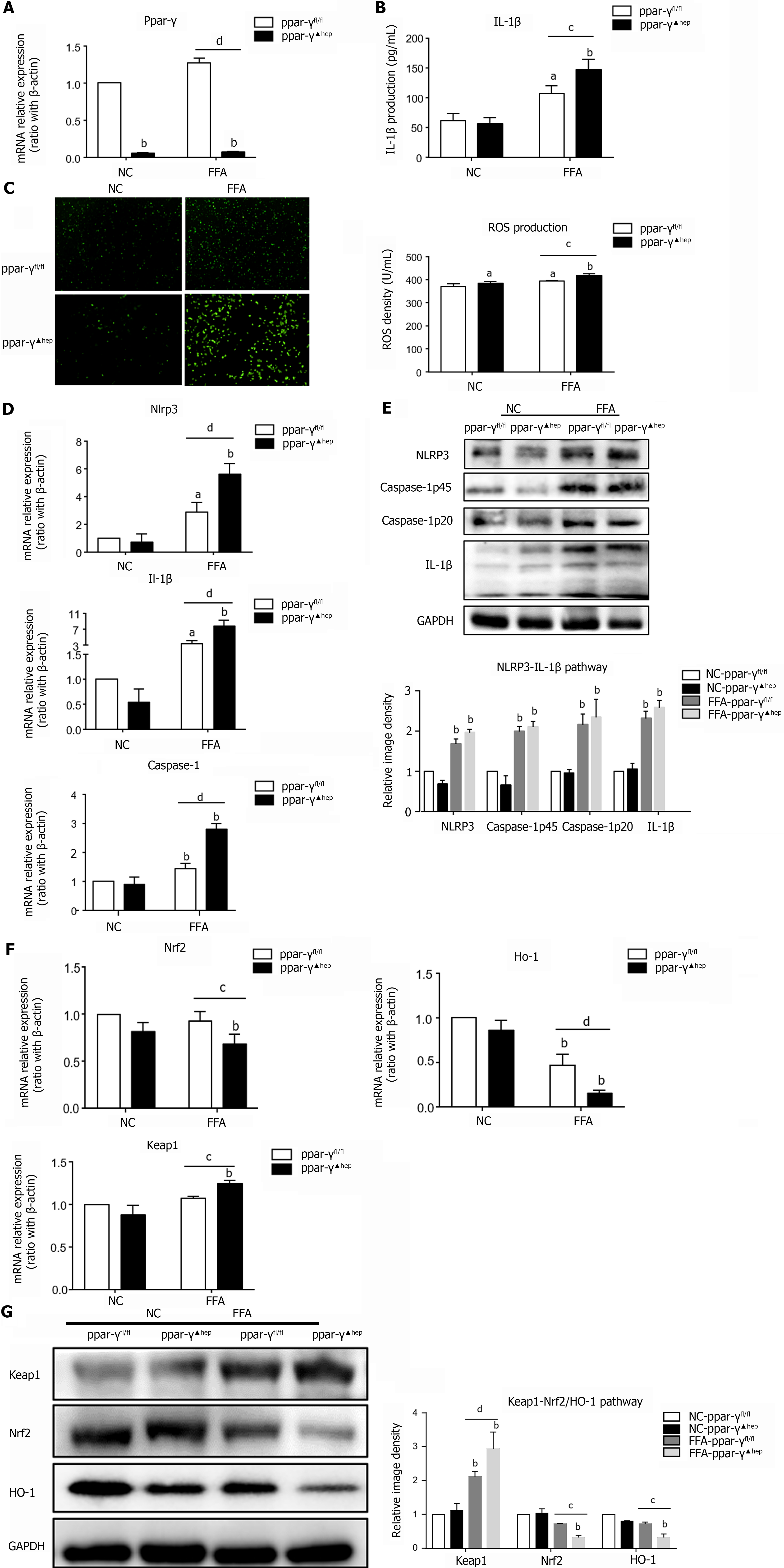Copyright
©The Author(s) 2022.
World J Hepatol. Jul 27, 2022; 14(7): 1365-1381
Published online Jul 27, 2022. doi: 10.4254/wjh.v14.i7.1365
Published online Jul 27, 2022. doi: 10.4254/wjh.v14.i7.1365
Figure 4 Hepatocyte-specific PPAR-γ knockout aggravates oxidative stress and NLRP3 inflammasome activation in lipid-laden hepatocytes.
Primary hepatocytes were isolated from PPAR-γfl/fl and PPAR-γ▲hep mice and treated with free fatty acids for 6 h for RT–PCR or 24 h for western blot, ELISA and reactive oxygen species (ROS) detection. A: mRNA expression of Ppar-γ in PPAR-γ-deficient hepatocytes; B: IL-1β production in PPAR-γ-deficient hepatocyte culture supernatant; C: ROS production in PPAR-γ deficiency hepatocytes; D: mRNA expression of NLRP3 inflammasome-related genes in PPAR-γ-deficient hepatocytes; E: Protein expression of NLRP3 inflammasome-related genes in PPAR-γ-deficient hepatocytes; F: mRNA expression of oxidative stress-related genes in PPAR-γ-deficient hepatocytes; G: Protein expression of oxidative stress-related genes in PPAR-γ-deficient hepatocytes. Values are expressed as the mean ± SE of the mean, aP < 0.05, bP < 0.01 vs ppar-γfl/fl or normal control-ppar-γfl/fl; cP < 0.05, dP < 0.01 comparison of the designated two groups, n = 3 experiments. NC: Normal control; ROS: Reactive oxygen species; GAPDH: Glyceraldehyde-3-phosphate dehydrogenase; Keap1: Kelch-like ECH-associated protein 1; Nrf2: NF-E2-related factor 2; Ho-1: Heme oxygenase-1; Nlrp3: NLR family pyrin domain-containing 3; Caspase-1: Cysteinyl aspartate-specific proteinase-1; Ppar-γ: Peroxisome proliferators-activated receptor-γ; IL: Interleukin.
- Citation: Li XY, Ji PX, Ni XX, Chen YX, Sheng L, Lian M, Guo CJ, Hua J. Regulation of PPAR-γ activity in lipid-laden hepatocytes affects macrophage polarization and inflammation in nonalcoholic fatty liver disease. World J Hepatol 2022; 14(7): 1365-1381
- URL: https://www.wjgnet.com/1948-5182/full/v14/i7/1365.htm
- DOI: https://dx.doi.org/10.4254/wjh.v14.i7.1365









